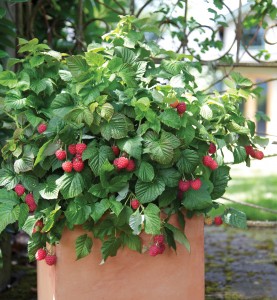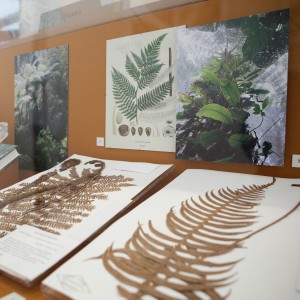Morning Eye Candy: Gustavia
Posted in Around the Garden, Photography on January 5 2013, by Matt Newman
Gustavia augusta — Photo by Ivo M. Vermeulen

Inside The New York Botanical Garden
Posted in Around the Garden, Photography on January 5 2013, by Matt Newman
Gustavia augusta — Photo by Ivo M. Vermeulen
Posted in Around the Garden, Photography on January 4 2013, by Matt Newman
Brazilian Red Cloak (Megaskepasma erythrochalmys) — Photo by Ivo M. Vermeulen
Posted in Around the Garden, Photography on January 3 2013, by Matt Newman
When we last had a look at this powder puff tree, not all of the subtle details were readily apparent. How many of you thought you were looking at speckles of dew, or pollen dustings?
Calliandra haematocephala — Photo by Ivo M. Vermeulen
Posted in Holiday Train Show on January 2 2013, by Matt Newman
 So, most of the kids are trudging back to school on Wednesday, January 2. It’s great for the frazzled parent, but it doesn’t mean the family has to call it quits on group adventures. For those with younger ones in tow, the Holiday Train Show is keeping its engine running through January 13, giving everyone a chance to pop in and see our timeless miniatures now that much of the seasonal madness has died down. But the trains found in our Conservatory aren’t the only locomotives keeping up that head of steam.
So, most of the kids are trudging back to school on Wednesday, January 2. It’s great for the frazzled parent, but it doesn’t mean the family has to call it quits on group adventures. For those with younger ones in tow, the Holiday Train Show is keeping its engine running through January 13, giving everyone a chance to pop in and see our timeless miniatures now that much of the seasonal madness has died down. But the trains found in our Conservatory aren’t the only locomotives keeping up that head of steam.
Thanks to the thoughtful cast of All Aboard with Thomas and Friends™, kids who haven’t had the opportunity to chug along with Thomas and his companion, Driver Sam, will now have almost the entire month of January to take part. That’s from now until January 27, at varying times in the NYBG‘s Ross Gallery. And to make these holiday memories last, know that this is no simple puppet show–the cast will need your kids’ help in guiding the wayward Thomas all the way to Brendam Docks, with crowd interaction, singalongs, and more.
Posted in Around the Garden, Birding Bite, Learning Experiences on January 2 2013, by Matt Newman
Figuratively speaking, of course.
Photo by Ivo M. Vermeulen
Posted in Gardening Tips on January 1 2013, by Sonia Uyterhoeven
Sonia Uyterhoeven is the NYBG‘s Gardener for Public Education.

Most of us like our blueberries served in a bowl. Of course, very few of us imagine growing them in a bowl, but that is precisely what modern hybridizers are allowing us to do. I exaggerate when I say bowl–I hope you understand that. But growing blueberries in a container–and a reasonably sized container, at that–is now a reality.
I have been perusing information from growers on the new introductions for 2013 and have found some truly interesting edibles. Fall Creek Farm & Nurseries of Oregon have a new series coming out this year called the BrazelBerries™ collection. The collection consists of two dwarf blueberries and one thornless raspberry which are small enough to comfortably tuck into a container for your patio garden.
Posted in Around the Garden, Photography on January 1 2013, by Matt Newman
Seeing the snowdrops pull themselves up by their bootstraps over the last month was a strange sight, if only because they’re not scheduled to arrive until the first moments of spring. But while their seasonal confusion was a little disconcerting, to see these coy troopers toughing out the worsening cold still proved a pleasant inspiration.
We wish you each an unequivocally successful year in 2013, and may you find your own bootstraps in the face of whatever 2012 had to throw at you.
Photo by Amy Weiss
Posted in Science on December 31 2012, by Matt Newman
 Want to map the evolutionary path of a plant species? Chances are good that you’ll find yourself thumbing through the stacks in an herbarium sooner or later. Here at the NYBG, the Steere Herbarium maintains a growing collection of over seven million specimens, each one meticulously studied, notated, and cataloged for reference. But botanical science of this tier is first and foremost a visual affair, relying on naked-eye examinations and scanning electron microscopes to untangle origins, relations, and the timeline of a given plant’s life on earth–where it’s been, and where it will be in the future. Needless to say, the effort can be tedious. But thankfully, the speedy march of technology is closing the gap, promising a fresh range of tools for identifying species new and old.
Want to map the evolutionary path of a plant species? Chances are good that you’ll find yourself thumbing through the stacks in an herbarium sooner or later. Here at the NYBG, the Steere Herbarium maintains a growing collection of over seven million specimens, each one meticulously studied, notated, and cataloged for reference. But botanical science of this tier is first and foremost a visual affair, relying on naked-eye examinations and scanning electron microscopes to untangle origins, relations, and the timeline of a given plant’s life on earth–where it’s been, and where it will be in the future. Needless to say, the effort can be tedious. But thankfully, the speedy march of technology is closing the gap, promising a fresh range of tools for identifying species new and old.
Among them, genomics leads the charge.
Jenn Cable of the New York Genome Center points all eyes toward James Beck, a botanist out of Wichita, Kansas, with a keen understanding of the future of the science. Using cutting edge genetic analysis, he’s now working with Steere Herbarium specialists to look beyond the microscope and into the very DNA of the specimens we keep, turning long-shelved specimens (some centuries old) into treasure troves of evolutionary information.
Posted in Around the Garden, Photography on December 31 2012, by Matt Newman
The windows are brief, but when winter’s clouds aren’t looking, warmth cuts a path.
Photo by Ivo M. Vermeulen
Posted in Around the Garden, Photography on December 30 2012, by Matt Newman
“I see you, but do you see me?”
Photo by Ivo M. Vermeulen